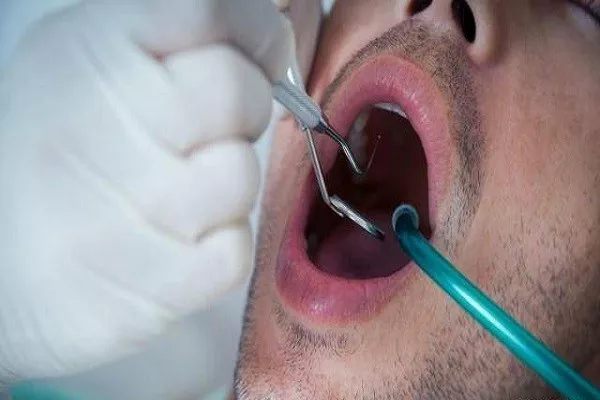Dental implants have transformed the world of dentistry by providing a reliable and long-lasting solution for replacing missing teeth. These artificial tooth replacements consist of several components, each with a specific function in restoring both the aesthetics and functionality of a natural tooth. In this comprehensive article, we will explore the various parts of a dental implant, including their roles and characteristics, to provide you with a clear understanding of this remarkable dental innovation.
The Main Components of a Dental Implant
A dental implant comprises three primary components:
Implant Post: The implant post serves as the foundation of the dental implant. It is a small, screw-like structure made of biocompatible materials, typically titanium or zirconia. The implant post is surgically placed into the jawbone and acts as an artificial tooth root.
Abutment: The abutment is a connector piece that attaches to the top of the implant post. It protrudes above the gumline and serves as an anchor for the final restoration, such as a dental crown, bridge, or denture.
Restoration: The restoration is the visible part of the dental implant and is custom-made to match the color, size, and shape of your natural teeth. It can be a single dental crown for a single-tooth replacement or a bridge or denture for multiple missing teeth.
Let’s take a closer look at each of these components:
Implant Post
Material: Implant posts are typically made of titanium or zirconia. Titanium is the most commonly used material due to its exceptional biocompatibility, strength, and ability to integrate with the bone.
Shape and Design: Implant posts have a cylindrical or screw-like shape. This design allows for easy insertion into the jawbone and provides stability.
Surface Texture: The surface of the implant post may be smooth or textured. Texture, such as fine grooves or a sandblasted finish, facilitates osseointegration, the process by which the bone bonds tightly to the implant’s surface.
Sizes and Lengths: Dental implant posts come in various sizes and lengths to accommodate individual patient needs. The choice of size depends on factors such as the location of the missing tooth and the density of the jawbone.
Color: Titanium implant posts are typically silver in color, while zirconia posts are white. The color of the implant post may vary slightly depending on the manufacturer.
Abutment
Material: Abutments are commonly made of titanium or zirconia, similar to implant posts. The choice of material depends on factors such as aesthetics and compatibility with the restoration.
Design: Abutments have a design that allows them to attach securely to the implant post. The specific design can vary between implant systems and may include external hex, internal hex, or other connection types.
Height: Abutments come in different heights to accommodate variations in gum tissue thickness and to ensure that the restoration is positioned correctly.
Shape: The shape of the abutment can vary, with some designed to support single dental crowns and others intended for bridges or dentures.
Restoration
Types: The restoration can take several forms, including a single dental crown for replacing one missing tooth, a dental bridge for multiple adjacent missing teeth, or a denture for the replacement of a full arch of teeth.
Material: Restorations are typically made of materials such as ceramic, porcelain, or a combination of materials to achieve both durability and aesthetics.
Customization: Each restoration is custom-made to match the color, size, and shape of the patient’s natural teeth. This ensures a seamless and natural-looking result.
Attachment: The restoration is attached to the abutment using screws or cement, depending on the type of restoration and the treatment plan.
The Dental Implant Process
Understanding the parts of a dental implant is essential to grasp the overall dental implant process:
Consultation and Evaluation: The process begins with a comprehensive consultation and evaluation by a qualified dentist or oral surgeon. This involves assessing the patient’s oral health, bone density, and suitability for dental implants.
Implant Placement: During the surgical procedure, the implant post is precisely placed into the jawbone. Over time, the bone fuses with the implant post in a process known as osseointegration.
Abutment Attachment: After osseointegration is complete, the abutment is attached to the implant post, typically in a separate minor surgical procedure. This step ensures a secure connection between the implant and the restoration.
Restoration Placement: The final restoration, whether it’s a dental crown, bridge, or denture, is custom-made and attached to the abutment. The restoration is designed to replicate the appearance and functionality of natural teeth.
Follow-Up and Maintenance: Patients are provided with post-treatment care instructions, and regular follow-up appointments are scheduled to monitor the implant’s success and overall oral health.
Conclusion
A dental implant is a sophisticated dental restoration that consists of three main components: the implant post, abutment, and restoration. The implant post serves as the artificial tooth root, the abutment connects the implant post to the restoration, and the restoration mimics the appearance and function of a natural tooth.
The choice of materials, shapes, and sizes for these components can vary based on individual patient needs and treatment plans. Dental implants offer a reliable and long-lasting solution for replacing missing teeth, restoring both aesthetics and functionality to the smile. If you are considering dental implants, consult with a qualified dentist or oral surgeon to determine the best treatment plan and to explore the options available for your specific dental needs.
Related Topics:






























